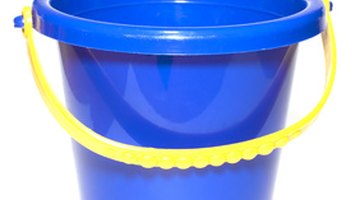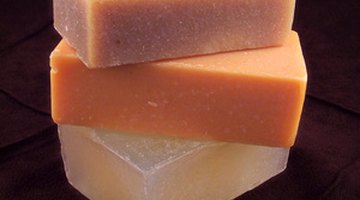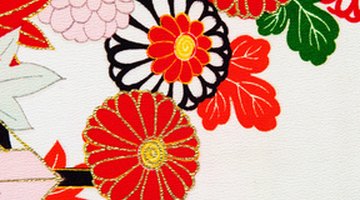How Do I Clean My Silk Kimono?
Kimonos are beautiful robes from Japan, worn by men and women for any formal event, from a funeral to a wedding. These cherished garments come in every color and pattern imaginable, and the finest ones are made of silk and require special care and attention when washing.

Things You Will Need
- Bucket or sink
- Cold water
- Delicate detergent
-
Consider taking the kimono to a dry cleaner. In the event of a serious stain, lack of a gentle detergent, or a house with hard water (which can damage delicate fibers) it can be wise to trust a professional with cleaning the kimono. Make sure the dry cleaner has experience with fine silks, and discuss any special needs for the item.
-
Fill the sink, or a bucket, with cold or lukewarm water, as hot water can damage silk. Do not place the item in a washing machine, even on the gentle cycle, as this could ruin the kimono. If hard water must be used, consider adding a spoonful of Borax powder, to make it gentler on the fabric.
-
Add a cleansing agent. A special, delicate clothing detergent can be used, but none which brighteners or bleach. Also, baby shampoo and mild, alkaline-free soap will work; if something is gentle enough for human skin, it's usually alright for silk.
-
Gently agitate the kimono in the soapy water. With care, wash the kimono by hand, paying special attention to any stains, embellishments, or damaged sections of the fabric. Avoid roughly scrubbing or manhandling the kimono, and rinse it of all soap and suds.
-
Let the kimono air dry. Place it on a hanger and let it dry away from direct sunlight, which could fade the color. Don't wring the fabric, just let excess water drip off. Never place the kimono in a clothes dryer, as it could shrink.




The Drip Cap
- Kimonos are beautiful robes from Japan, worn by men and women for any formal event, from a funeral to a wedding.
- Consider taking the kimono to a dry cleaner.
- In the event of a serious stain, lack of a gentle detergent, or a house with hard water (which can damage delicate fibers) it can be wise to trust a professional with cleaning the kimono.
- Do not place the item in a washing machine, even on the gentle cycle, as this could ruin the kimono.
References
Resources
Writer Bio
Hallie Engel is a food and lifestyle writer whose work has appeared in several international publications. She served as a restaurant critic for "Time Out Abu Dhabi" and "Time Out Amsterdam" and has also written about food culture in the United Arab Emirates for "M Magazine." She holds a bachelor's degree in communications and film studies from University of Amsterdam.
Photo Credits
- girl in kimono at tea house image by TMLP from Fotolia.com
- girl in kimono at tea house image by TMLP from Fotolia.com
- bucket image by Aleksandr Ugorenkov from Fotolia.com
- natural soaps 3 image by samantha grandy from Fotolia.com
- kimono design iii image by Craig Hanson from Fotolia.com
- blue silk image by ELEN from Fotolia.com
More Articles



